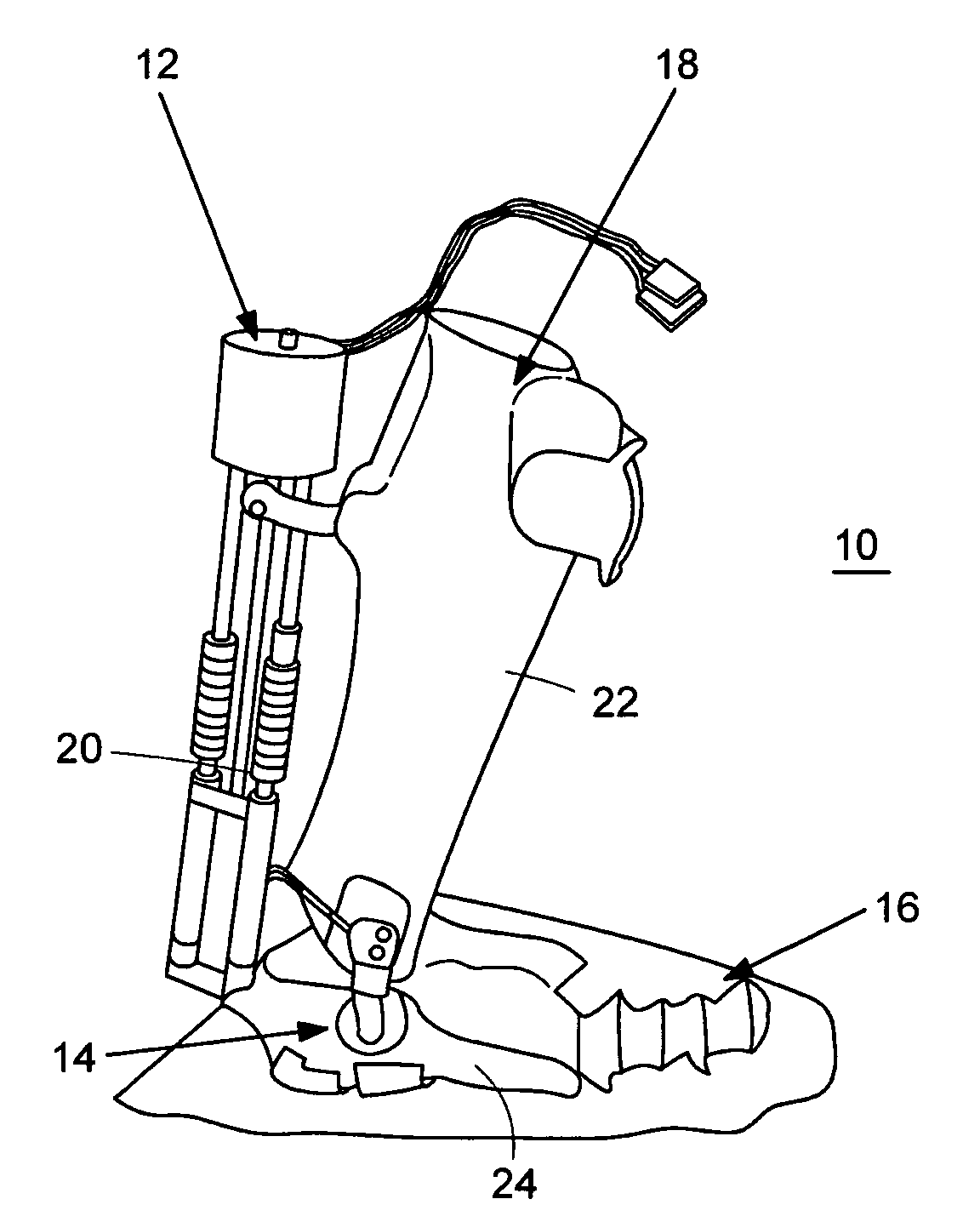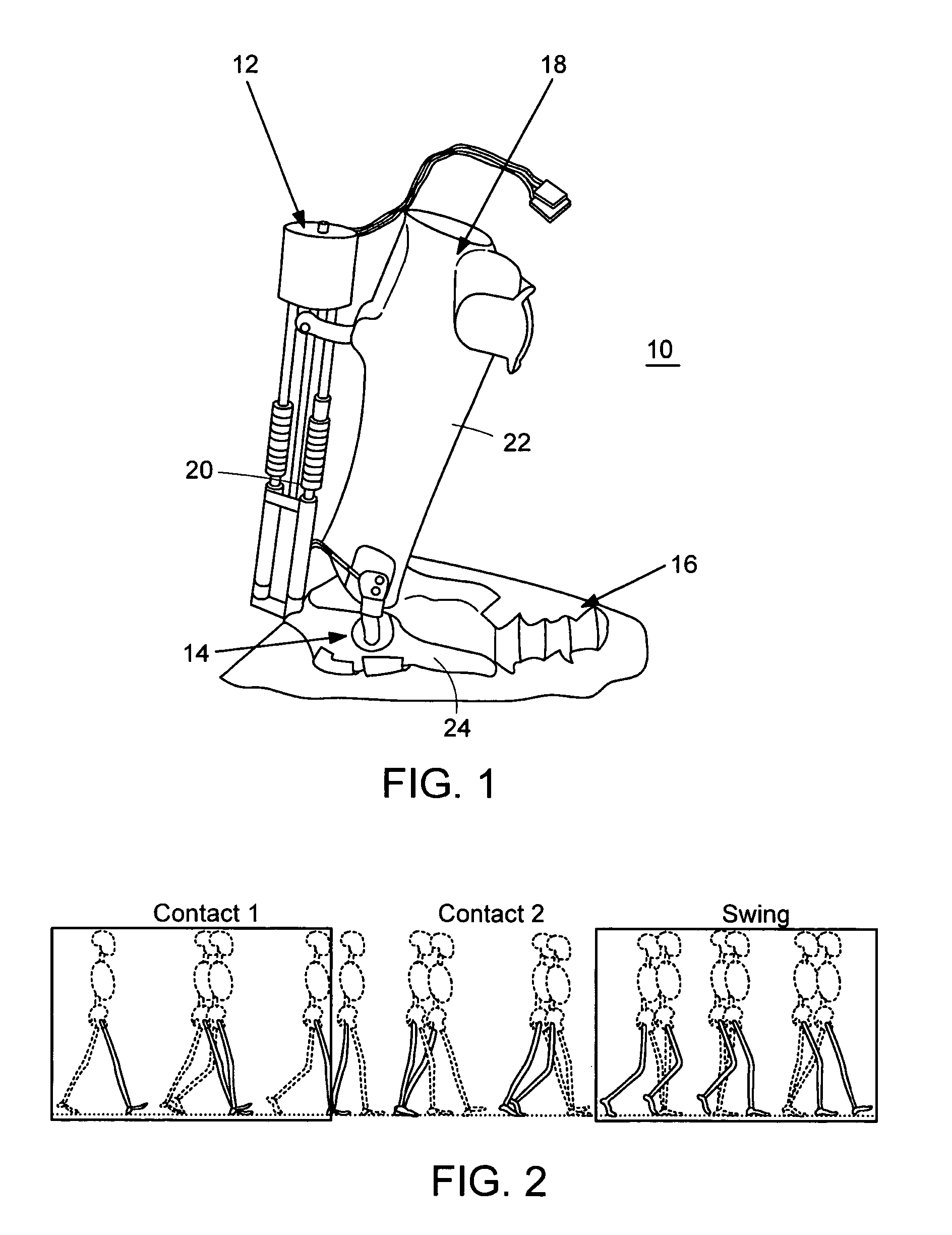Active ankle foot orthosis
a technology of active ankle and foot, applied in the field of active ankle foot orthosis, can solve the problems of increasing the risk of tripping, severe inhibition of locomotor function, and disadvantages, and achieves the effects of less kinematic differences, increased independence, and improved independen
- Summary
- Abstract
- Description
- Claims
- Application Information
AI Technical Summary
Benefits of technology
Problems solved by technology
Method used
Image
Examples
example
[0041]A clinical evaluation of the AAFO 10 was conducted in the Gait Laboratory at Spaulding Rehabilitation Hospital, Boston, Mass. Drop foot participants having only a unilateral drop foot condition were selected, and on their affected side, participants did not suffer from a gait disability other than drop foot. Both participants had an absence of strongly manifesting spasms and contractures in lower extremity joints. Finally, each participant had used an AFO for at least two years and therefore was experienced at AFO ambulation. Subjects reached a stable neurological state after the incident that caused their disability. Thus, no recovery of function was expected or found. Three normal subjects were matched for gender, height, weight, and age to the drop foot participants. Subject sex, age, mass, height, and self-selected gait speed are listed in Table III.
[0042]
TABLE IIIAgeMassHeightSelf-SelectedSubjectSex(yr)(kg)(m)Gait Speed (m / s)Drop FootM6279.11.791.22Drop FootM6295.41.771.0...
PUM
 Login to View More
Login to View More Abstract
Description
Claims
Application Information
 Login to View More
Login to View More - R&D
- Intellectual Property
- Life Sciences
- Materials
- Tech Scout
- Unparalleled Data Quality
- Higher Quality Content
- 60% Fewer Hallucinations
Browse by: Latest US Patents, China's latest patents, Technical Efficacy Thesaurus, Application Domain, Technology Topic, Popular Technical Reports.
© 2025 PatSnap. All rights reserved.Legal|Privacy policy|Modern Slavery Act Transparency Statement|Sitemap|About US| Contact US: help@patsnap.com



